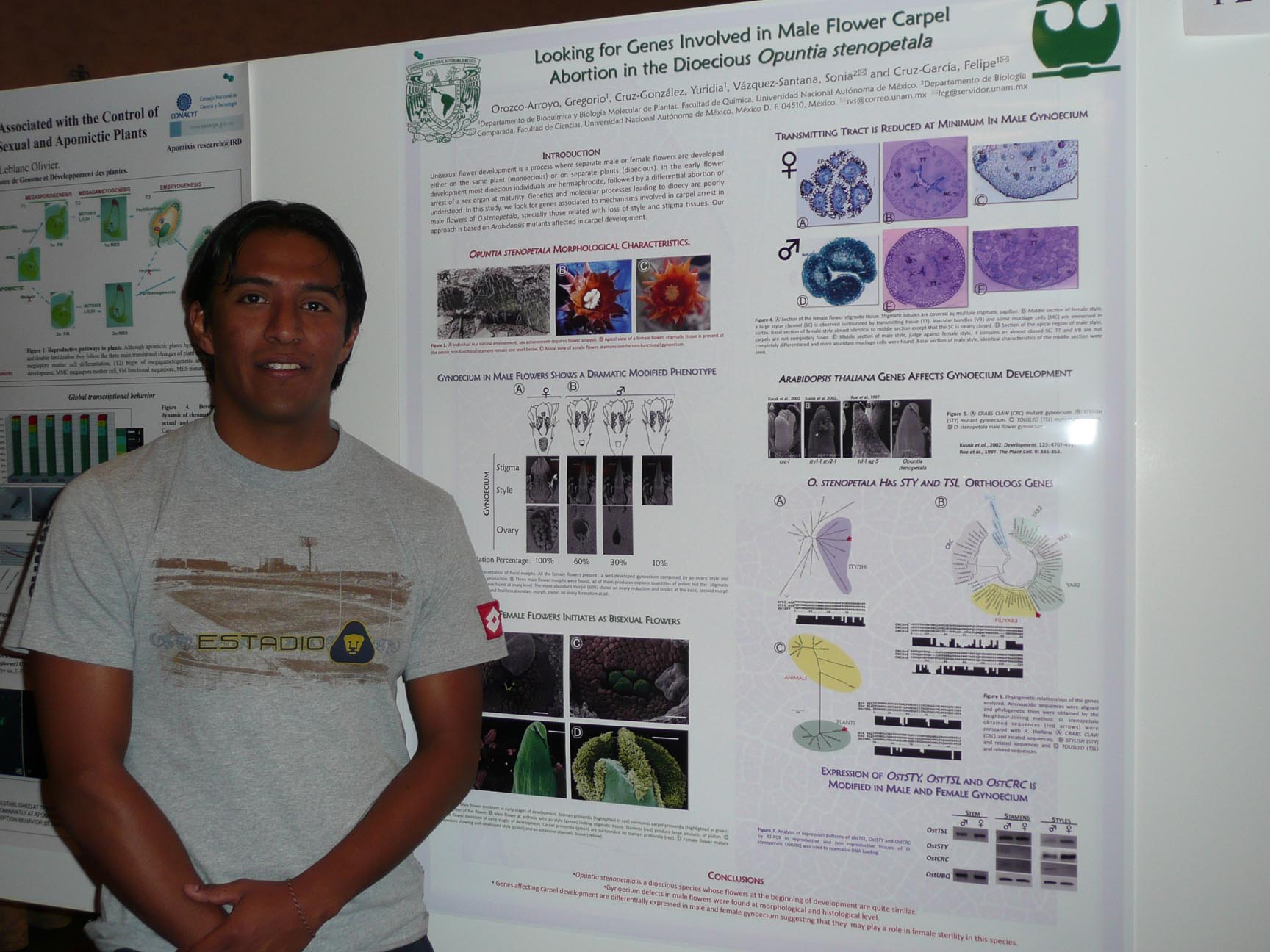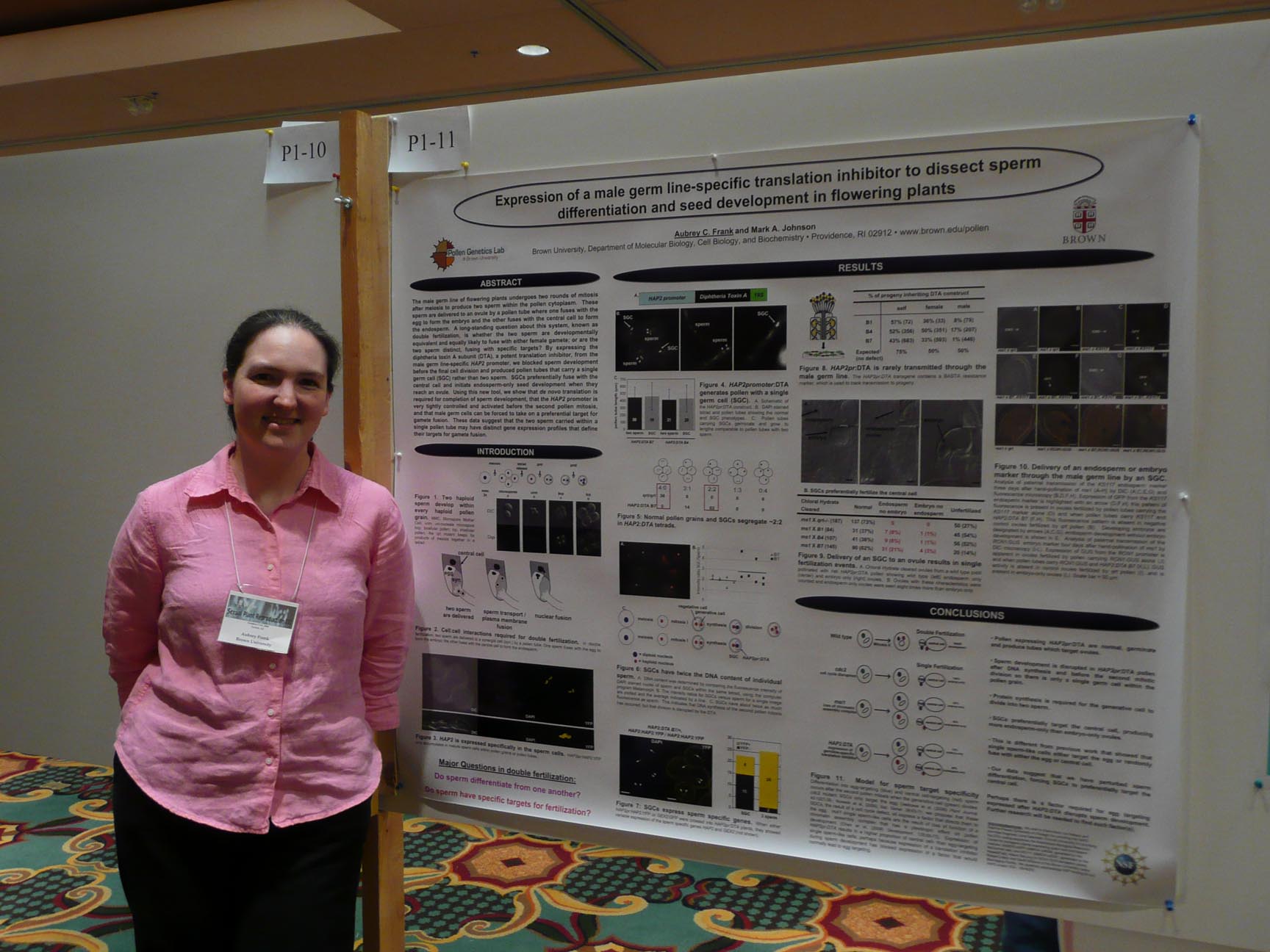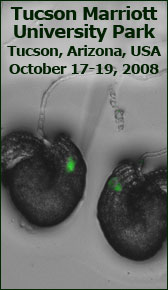Home
Registration
Abstracts
Meeting Program
Program & Abstract Book
Oral Presentations
Speaker List
Poster Information
Poster Awards
Lodging Accommodations
Financial Assistance
Sponsors & Exhibitors
Reaching Tucson
Shuttle From Airports
Local Attractions
Contact Us
Check out the information about shuttle service from Tucson and Phoenix airports to Marriott in the "shuttle from airports" link on the left navigation bar above for details!
Details about talks in the conference are now posted in the oral presentations page. Click the "Oral presentations" link on the left navigation bar above for details!
Joseph Mascarenhas
poster awards
A four member faculty judging committee (Dr. Kenneth Feldman, Dr. Karen Schumaker, Dr. Dmitry Belostotsky and Dr. Ramin Yadegari) visited all of the posters, interacted with the poster presenters and announced the winners. The prize money (total of $1000) for poster award winners was generously provided by a grant from NSF.
First prize ($500): Gregorio Orozco-Arroyo
LOOKING FOR GENES INVOLVED IN MALE FLOWER CARPEL ABORTION IN THE DIOECIOUS OPUNTIA STENOPETALA
Orozco-Arroyo, Gregorio1, Cruz-González, Yuridia1, Vázquez-Santana, Sonia2 and Cruz-García, Felipe1
1Departamento de Bioquímica y Biología Molecular de Plantas, Facultad de Química, Universidad Nacional Autónoma de México. México D. F. 04510, México. 2Departamento de Biología Comparada, Facultad de Ciencias, Universidad Nacional Autónoma de México. México D. F. 04510, México.
Abstract:
Unisexual flower development is a process where separate male or female flowers are developed either on the same plant (monoecious) or on separate plants (dioecious). Most dioecious plants have an hermaphroditic stage early in flower development, followed by a differential abortion or arrest of a sex organ. Opuntia stenopetala is a dioecious species, carpel and stamen differentiation is initiated in all their flowers, later in development the inappropriate reproductive organ is arrested resulting in male or female flowers. Male flowers present a phenotype without stigma and incomplete ovule development. Genetics and molecular processes leading to dioecy are poorly understood. In this study, we look for genes associated to mechanisms involved in carpel arrest in male flowers of O.stenopetala, specially those related with loss of style and stigma tissues. Our approach is based on Arabidopsis mutants affected in carpel development. STYLISH1 (STY1), TOUSLED (TSL) and CRABS CLAW (CRC) mutants shows a significant loss of carpel tissues developing reduced amounts of stylar and stigmatic tissues. STY is probably involved in auxin biosynthesis regulation, TSL is linked to cell cycle progression and CRC controls polarity of carpel margins. We identified from O.stenopetala partial cDNAs, orthologs of STY (OstSTY), CRC (OstCRC) and TSL (OstTSL). Phylogenetic analyses suggest that we identified orthologs for STY and TSL genes. Expression analysis shows that both OstSTY and OstTSL mRNAs accumulates preferentially in female carpel and OstCRC is detected only in male carpel which suggest that these genes play a role in female sterility in this species.

Second prize ($300): Aubrey Frank
EXPRESSION OF A TRANSLATION INHIBITOR IN THE ARABIDOPSIS GENERATIVE CELL PRODUCES SINGLE GERM CELLS THAT PREFERENTIALLY TARGET THE CENTRAL CELL
Aubrey C. Frank and Mark A. Johnson
Brown University Providence, Rhode Island, United States of America
Abstract:
The male germ line of flowering plants undergoes two rounds of mitosis after meiosis to produce two sperm within the pollen cytoplasm. These sperm are delivered to an ovule by a pollen tube where one fuses with the egg to form the embryo and the other fuses with the central cell to form the endosperm. A long-standing question about this system, known as double fertilization, is whether the two sperm are developmentally equivalent and equally likely to fuse with either female gamete; or are the two sperm distinct, fusing with specific targets? By expressing the diphtheria toxin A subunit (DTA), a potent translation inhibitor, from the male germ line-specific HAP2 promoter, we blocked sperm development before the final cell division and produced pollen tubes that carry a single germ cell (SGC) rather than two sperm. SGCs preferentially fuse with the central cell and initiate endosperm-only seed development when they reach an ovule. Using this new tool, we show that de novo translation is required for completion of sperm development, that the HAP2 promoter is very tightly controlled and activated before the second pollen mitosis, and that male germ cells can be forced to take on a preferential target for gamete fusion. These data suggest that the two sperm carried within a single pollen tube may have distinct gene expression profiles that define their targets for gamete fusion.

Third prize ($200): Mily Ron
MIS-REGULATION OF A NAT-SIRNA PAIR IN SPERM CELLS RESULTS IN SINGLE FERTILIZATIONS.
Mily Ron, Monica Alandete-Saez, and Sheila McCormick
Plant Gene Expression Center and Dept. of Plant and Microbial Biology, USDA/ARS-UC-Berkeley, Albany, CA, USA
We noticed that plants with T-DNA insertions in a gene we call T10 had reduced seed set (50-80% in homozygotes). Reciprocal crosses with WT indicated the male gametophyte was affected, although pollen of homozygous t10 plants appeared normal and could germinate, suggesting a defect in fertilization. T10 is in reverse orientation to the adjacent gene that we call M. The 3’UTR of T10 protrudes ~80 bp into the last exon of M, creating a transcript overlap. We hypothesized that T10 and M generate a pair of natural antisense small interfering RNAs (nat-siRNA) and that the transcript of T10 down-regulates M transcriptsin sperm cells. Q-PCR with flowers confirmed that the T10 transcript was almost absent from the t10 mutant, while M transcripts were increased. Promoter-reporter lines confirmed that T10 is expressed specifically in sperm cells while M is expressed in both the vegetative and sperm cells. Co-expressing T10 and a GFP-M fusion in leaves resulted in down-regulation of GFP, supporting our hypothesis. Moreover, plants in which M was overexpressed in sperm had phenotypes similar to t10 mutants. DIC imaging of the undeveloped seeds 2-4 days after pollination showed that in the t10 mutants single fertilizations are prevalent (~40% of either embryo or endosperm) compared to their incidence in other known mutants. These results suggest that proper regulation of M in sperm cells is important for fertilization and supports the idea that sperm randomly fertilize the egg or central cell.
Congratulations to all the participants and the winners!
FSPRIII expresses its special thanks to the judging committee and NSF for sponsoring the cash prizes.

- University of Arizona
